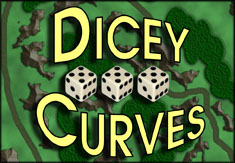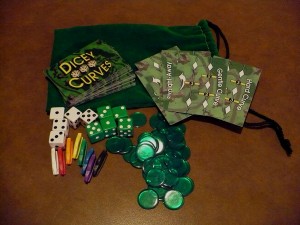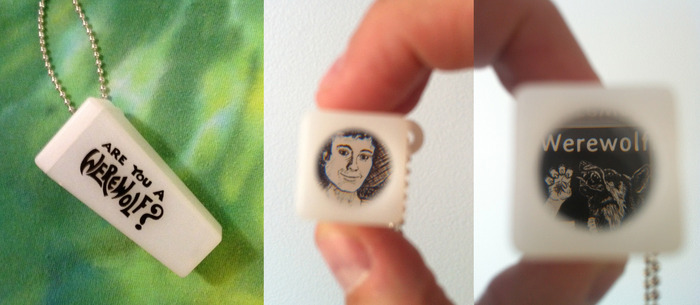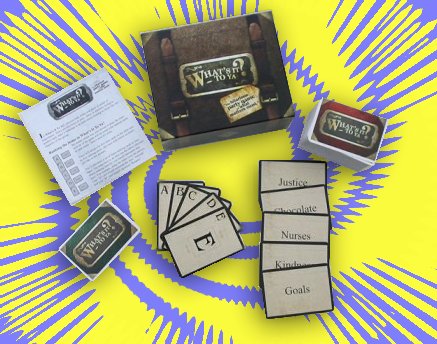No really... "What's it to ya?"
Today we're looking at "What's it to Ya?" a nifty little party game about "What matters most." Shortly after the blog went live we were contacted by Mike Petty, who designed the game not only to entertain but to get families, students, and folks in ministry talking about priorities and, well...what matters most. He sent a few copies our way, and so today we're taking a look at the two distinct sides of this coin.

The Game - The game-play is simple; it truly is a party game. But because of the
simplicity, Petty was able to include 3 different variants of the rules, Individual play, Partnership play, and "What's it to..." Any way you play it, the idea is the same. Players will be ranking 5 item cards from highest to lowest in importance to them.
The Items - Think of these like Apples to Apples green cards. Only not so much in the specific or proper nouns that they deal with, but more generalized concepts. Anything from anti-drug laws, to prayer, to clothes, to leadership or numbers.
Ranking Cards - each player (or partnership depending on your preferred method of play) will be given a set of 5 ranking cards. These simply have a rank of A-E on them. One set will be used on the table.
Game-Play - We'll start with the partnership game, this is the version that seems to get off the ground quicker and creates some fun and insightful and "I can't believe you think that!" moments at the table.
So here's how it works, you'll set up by handing out ranking cards to the teams, and then put one set of ranking cards in the middle of the table. Then you deal 5 items from the deck, placing each of them next to 1 of the 5 ranking cards.
While writing this I just drew 5 random cards, so the table would look like this:
A - Realistic Expectation
B - Family
C - Electricity
D - Pleasure
E - News
Now, the teams decide who will guess and who will be "The Boss" first. (And yes, you will probably hear "like a boss..." more than once because of this) the boss takes the ranking cards and places them in order of importance SECRETLY, in their own personal ranking from left to right. You then take turns having the team's "guesser" try to guess the order, starting with most important. The team with the most matches scores a point for that round. If there's a tie, each team gets a point. And if you go 5 for 5 you score 2. Players switch roles and you do another round. You can play as many or as few rounds as you want, they suggest a game to 7 points though.
By nature of elimination you'll find that to score 5 of 5 is really only to score 4 of 5, because once you've scored the 4th there is only one answer left. It's still a difficult feat, but it's not a true 5 for 5...
The Individual Game - This variant operates the same way, but the scoring is different, instead of players guessing to match their partner, they instead individually rank the items, and score by having the most popular answer. In my above example that means if there are 5 players and 3 say Electricity is the most important then they score that card for the round - and a healthy amount of quizzical looks from around the table - again having the most matching popular answers scores you a point for the round, and a 5 for 5 scores 2.
The What's it to...? Game - This version is more of a just-for-fun version with no real scoring. In this version you put someone in the "hot seat" as it were, and they are given a set of ranking cards. Each other player is trying to guess the order of the items as ranked by the person in the hot seat. Players take turns being in the hot seat and are asked to be honest about their ranking, not just to try and throw everyone off!
The Teachable Moments - As I said above, there's more to this than just the game-play, and that's the heart of what this game is about. Is it fun? YES! The group of students I played this with had a blast, and asked to borrow it from me! We had many laughs, and a few cringing moments when someone guessed wrong. But the conversations that can come out of the game are numerous; after a few rounds I had the students make their guess for their partner and also tell why they were picking that item in that rank." I could also easily see using the game with pre-determined items, and revolving a series of Sunday school lessons around those items and the priorities we place on them.
The Bottom Line - For a party game "What's it to Ya?" is exactly what I look for in party games: super light in terms of game play and mechanisms. With little to no housekeeping. It supplies good entertainment and lots of laughs, whether you want to laugh or take the conversation deeper it sets the table for both! If you're a parent, a small group leader, or a person in ministry I recommend grabbing a copy and starting some conversations with the people you love.
You can pick up a copy of "What's it to Ya?" Super cheap RIGHT HERE!
 By Firestone
When it comes to board games, if there’s one question I’m asked more than any other, it’s “Where do you get these games?” Usually I have to tell people that they can get it on Amazon (if they’re lucky), and on online retailer or game store if they’re not lucky. That’s why it’s great when I can tell people that a fun game is available at their local Target store.
By Firestone
When it comes to board games, if there’s one question I’m asked more than any other, it’s “Where do you get these games?” Usually I have to tell people that they can get it on Amazon (if they’re lucky), and on online retailer or game store if they’re not lucky. That’s why it’s great when I can tell people that a fun game is available at their local Target store.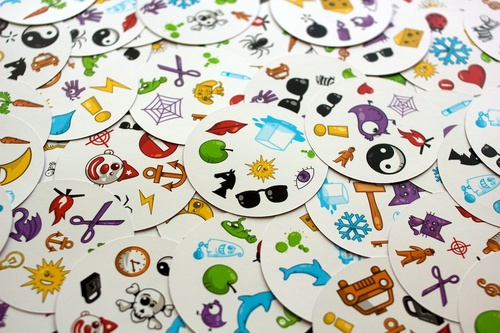 The game comes with many ways to play—but they’re all versions of be-the-first-to-spot-the-matching-symbols. Our favorite is called The Tower. Each player gets one facedown card; the rest of the deck is placed in a faceup pile in the middle of the table. At the same time, each person turns his or her card over, and then everyone has to find and call out the symbol their card and the center card has in common. Each person will have a different symbol that matches the middle one. If you win, you get the card and add it to the top of your pile. That will reveal a new card from The Tower, and you look for a new matching symbol. When The Tower is gone, you count up cards, and whoever has the most cards wins.
The game comes with many ways to play—but they’re all versions of be-the-first-to-spot-the-matching-symbols. Our favorite is called The Tower. Each player gets one facedown card; the rest of the deck is placed in a faceup pile in the middle of the table. At the same time, each person turns his or her card over, and then everyone has to find and call out the symbol their card and the center card has in common. Each person will have a different symbol that matches the middle one. If you win, you get the card and add it to the top of your pile. That will reveal a new card from The Tower, and you look for a new matching symbol. When The Tower is gone, you count up cards, and whoever has the most cards wins.
